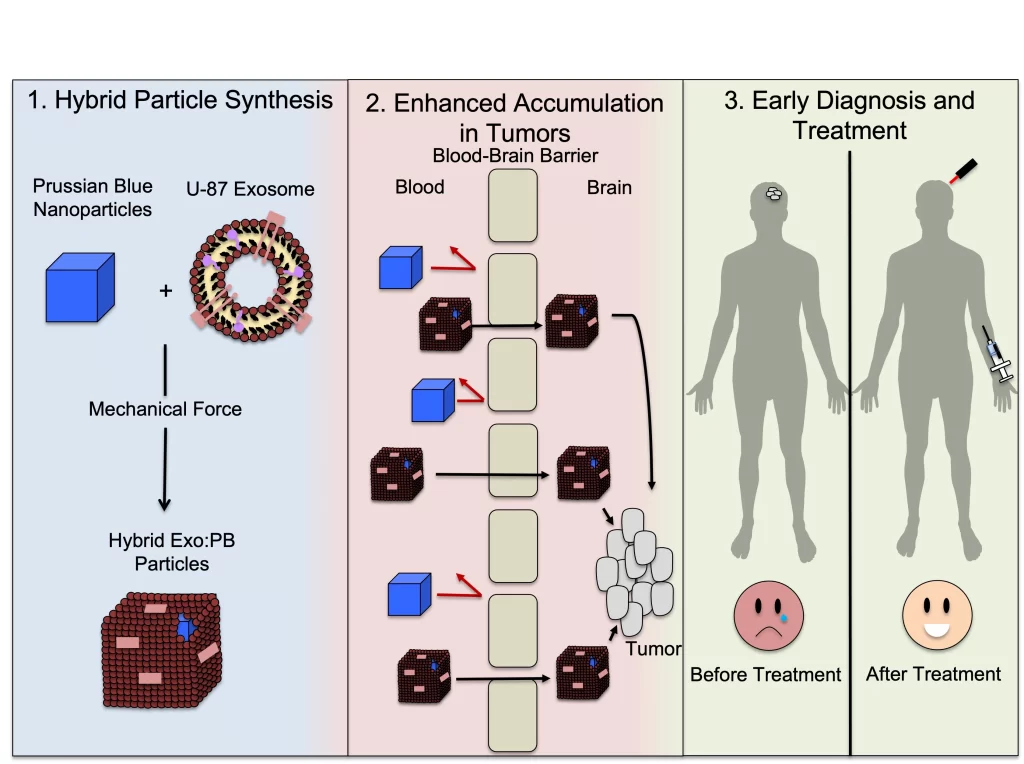Q&A with MSU student researcher Meghan Hill on advances in biomedical engineering.
Michigan State University is a top global research university and a member of the prestigious Association of American Universities, widely regarded as among the top research-intensive institutions in North America. The following story highlights one of the many examples of MSU’s research excellence and innovation.
Meghan Hill is a graduate student in the Department of Biomedical Engineering at Michigan State University. Hill has won first place in MSU’s Council of Graduate Student’s 3-Minute Thesis Competition and represented MSU at the regional Midwestern Association of Graduate School’s thesis competition in Chicago. Most recently, she was awarded a dissertation completion fellowship through MSU’s College of Engineering. Hill’s research with Prussian blue nanoparticles will improve brain cancer research.
What is a nanoparticle?

A nanoparticle represents a particle that ranges in size between one and 100 nanometers. Nanoparticles can be composed of many different elements and can be made into many different shapes for various applications in medicine, the environment and chemistry.
How do you use nanoparticles in your research?
Most nanoparticles can’t pass through the blood-brain barrier — the network of blood vessels that protects the brain. To bypass this, we use Prussian blue nanoparticles. Prussian blue pigment was created in the 1700s when someone combined rocks and blood together to create a red paint but ended up with blue instead. Because of its cubic structure and high iron content, Prussian blue is used in various medical applications. For example, the position of the iron atoms in Prussian blue can enhance MRI contrast.

What is the goal of your research?
The goal of the research is to deliver nanoparticles that can have both diagnostic and therapeutic effect on brain tumors. This could have a really big impact on the medical industry because this work could be applied to many different types of cancers in the future.
We would like to improve the quality of life for patients that are diagnosed with brain cancer. The current five-year survival rate is less than 7%, and we want to increase that. Hopefully, we will be able to diagnose brain cancer at an earlier stage.
I am really hoping to find a way to apply nanotechnology to the medical industry by finding different ways to utilize common types of particles or drugs whose abilities aren’t commonly investigated. I want to see how far nanotechnology can go because it’s still an emerging field in the medical industry.

This article was originally found on MSU TODAY.
About the MSU Innovation Center:
The MSU Innovation Center is dedicated to fostering innovation, research commercialization, and entrepreneurial activities from the research and discovery happening across our campus every day. We act as the primary interface for researchers aiming to see their research applied to solving real-world problems and making the world a better place to live. We aim to empower faculty, researchers, and students within our community of scholars by providing them with the knowledge, skills, and opportunities to bring their discoveries to the forefront. Through strategic collaborations with the private sector, we aim to amplify the impact of faculty research and drive economic growth while positively impacting society. We foster mutually beneficial, long-term relationships with the private sector through corporate-sponsored research collaborations, technology licensing discussions, and support for faculty entrepreneurs to support the establishment of startup companies.
Is your organization looking to fund further cancer biomedical research by MSU researchers? Click Here.
